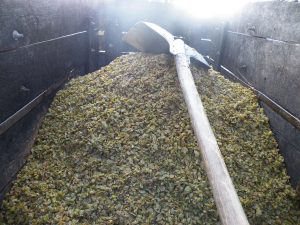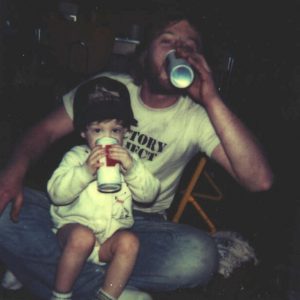It’s very difficult, if not impossible, for one single person to thoroughly review every single piece of peer reviewed literature related to wine that is published every day. This Wine Literature Review Lightning Round series presents three new papers (within the past year or two) in one post by briefly summarizing the research and linking to the abstract in order for you to pursue further if you’re interested.
NOTE: For today’s lightning round, I’ll be presenting just two articles instead of three.
WINEMAKING
Fining is a very commonly used technique in winemaking to, among other things, clarify a wine to remove unwanted compounds that could reduce the overall quality of a finished wine. What winemakers choose as the fining agent varies, however, traditionally the agent of choice has been proteins of animal in origin, such as gelatin, casein, egg albumin, and isinglass.
Due to various allergies and shifts in dietary habits, animal-origin fining agent alternatives have been developed, such as proteins coming from plants like legumes and potatoes. More

Photo courtesy Flickr user Alexander von Halem
recently, fining agents derived from yeasts, grape seeds, and grape marc cell walls have been evaluated as possible fining agents, which would add a more sustainable component to the mix. One potential problem with using grape marc cell walls noted in recent studies has been the reduction of anthocyanins and tannins in the finished wine, which could negatively impact wine color, astringency, and other wine quality characteristics.
A new study, available online and to be published in the January 2019 issue of Food Chemistry, aimed to evaluate the potential use of purified grape marc/pomace as a fining agent for wine, with a specific focus on the exact dose and contact time to minimize the impact on wine color characteristics noted in other studies. Additionally, purified grape marc/pomace from multiple winegrape varieties were tested.
Brief Methods
Grape marc/pomace was purified from Monastrell, Cabernet Sauvignon, Syrah, and Macabeo grapes.
Chemical analysis of each purified grape marc/pomace was performed.
To test optimal dose and contact time, purified grape marc/pomace from the Monastrell grapes were added to Monastrell wine in three doses (6, 10, and 13mg/mL) and three different contact times (5, 10, and 20 days).
To test the effects of grape origins, all purified marcs/pomaces were added to Monastrell wines at a 6mg/mL dose for a contact time of 5 days.
All treatments were performed in triplicate.
Chemical analyses were performed on all finished wines.
Brief Results/Conclusions
Overall, study results showed that the best dose and contact time for using purified grape marc/pomace as a fining agent in wine was 6mg/mL for 5 days. At this dose/contact time combination, wines were fined to a point where it did not significantly alter wine color characteristics like those that have been noted in other studies.
While there were some differences between purified grape marc/pomaces of different grape varieties, the researchers noted that overall, using purified grape marc/pomace as fining agent in general at a dose of 6mg/mL for 5 days is a viable alternative to animal-based fining agents. It is important to note that no sensory analysis was performed during this study, which would have been nice to have to be that much more convincing.
Source:
HEALTH
Many studies have shown a link between risky drinking in adolescence and adulthood and childhood exposure, however, exactly when this link establishes itself is less understood. Many studies have shown that 3-6-year olds are already familiar with different kinds of alcoholic beverages (the names, anyway) as well as who is drinking under specific social situations (i.e. attributing alcohol consumption at a party more so than outdoors). Specifically, one study looking at 3-6 year old Swiss children found that close to 70% of them correctly identified beer, red and white wine, and champagne as alcoholic beverages (from pictures, of course), while almost half the children were able to identify each alcohol’s specific name (i.e. red wine instead of just alcohol).

Photo courtesy Flickr user Dave Fischer
A new study, available online and to be published in the January 2019 issue of Addictive Behaviors, aimed to explore the possible origins of adolescent/young adult risky drinking behavior by studying 3-6-year old’s alcohol-related knowledge as well as their parents drinking habits and overall family life.
Brief Methods
214 French-speaking Swiss 3-6 year olds completed the Appropriate Beverage Task survey while their parents completed a questionnaire with a focus on their specific drinking habits as well as other demographic information. Briefly, the Appropriate Beverage Task survey was a collection of drawings of people in various situations where they were drinking a beverage and the child was asked what they thought was going on in the picture and the name of the drink in question.
Brief Results/Conclusions
Results showed that when parents drank more frequently, in higher quantities, or during meals, the children would be more likely to correctly identify an alcoholic beverage from the picture task as well as the social activity occurring in the picture.
There was no effect of parental binge drinking or single parent households on the alcohol knowledge of children.
More contact with adults outside of the immediate family as well as attending fairs and parties increased the likelihood of a child correctly identifying an alcoholic beverage.
TV watching did not influence alcohol knowledge in children.
Overall, the study found that more contact with adults that drink alcohol, either inside or outside the immediate family environment, led to increased knowledge of alcohol and the social situations surrounding drinking. According to the researchers, this may lead to possible risky drinking later on in adolescence and young adulthood, but without actually following these children over time, this conclusion is merely speculative in nature.
Source:
